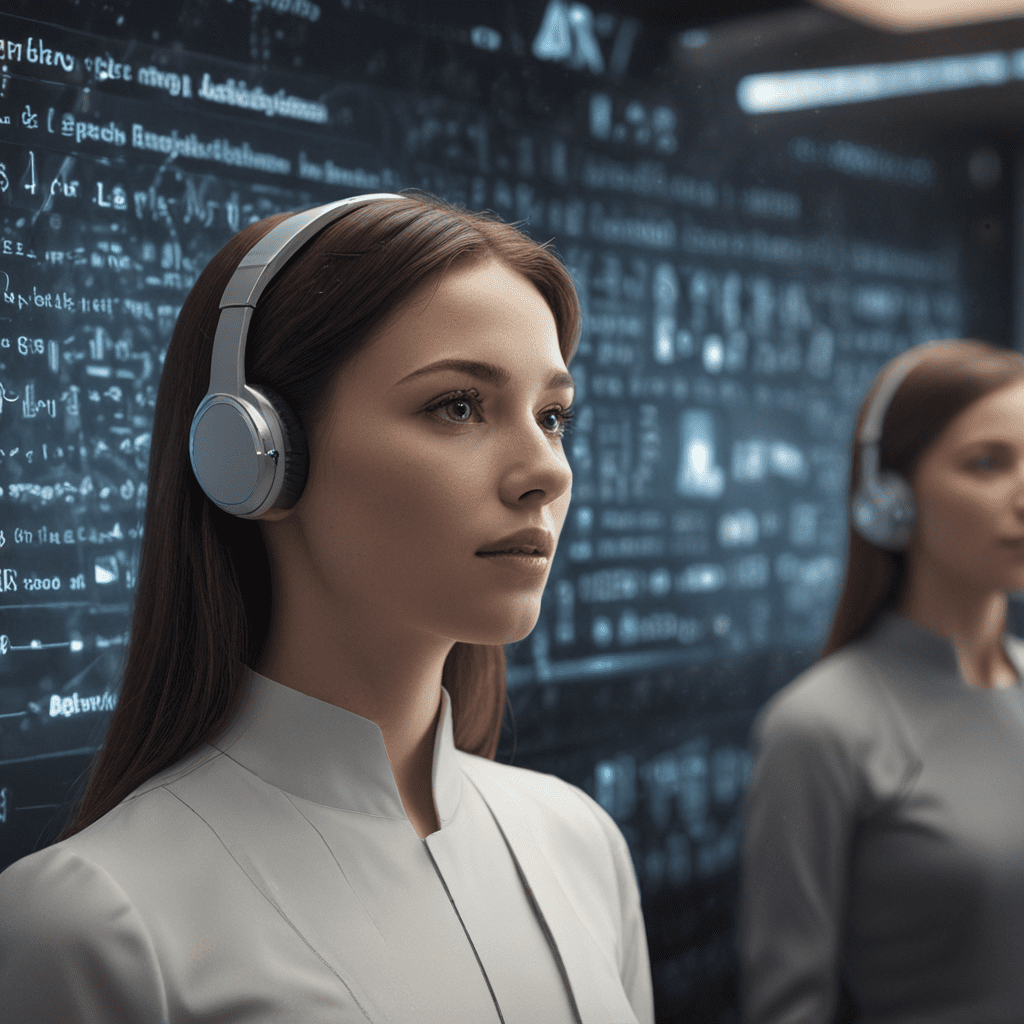
Introduction
The language interpretation industry is undergoing a transformative shift, driven by the rapid advancements in artificial intelligence (AI) and natural language processing (NLP). Virtual assistants (VAs), powered by these technologies, are emerging as game-changers in the field, promising to redefine the way languages are interpreted. This article delves into the transformative role of virtual assistants in the language interpretation industry, exploring their capabilities, benefits, and potential impact on real-world scenarios.
Current State of the Language Interpretation Industry
The language interpretation industry has traditionally relied on human interpreters to facilitate communication across language barriers. However, human interpreters can be expensive, and their availability is often limited, especially in remote or under-resourced areas. Moreover, the quality of interpretation can vary depending on the interpreter's skills, experience, and cultural background.
Emergence of Virtual Assistants and their Capabilities
Virtual assistants, powered by AI and NLP technologies, are capable of understanding, translating, and interpreting spoken and written language in real-time. They can communicate in multiple languages, making them ideal for facilitating cross-language communication. VAs can also be programmed with industry-specific knowledge, cultural context, and specialized terminology, enabling them to provide accurate and nuanced interpretations.
Benefits of Virtual Assistants in Language Interpretation
The integration of virtual assistants into the language interpretation industry offers numerous benefits. VAs can:
- Reduce costs: Virtual assistants are significantly less expensive than human interpreters, making language interpretation more accessible and cost-effective.
- Provide real-time interpretation: VAs can provide instant translations, eliminating the need for interpreters to take notes and interpret sequentially.
- Enhance accuracy and consistency: VAs are trained on vast datasets, ensuring consistent and accurate interpretations across multiple languages.
- Offer accessibility: VAs can be deployed on a wide range of platforms, including smartphones, tablets, and laptops, making them easily accessible anytime, anywhere.
6. Integration of Virtual Assistants with Existing Language Interpretation Tools
Virtual assistants can be seamlessly integrated with existing language interpretation tools to enhance their functionality. For instance, VAs can be used to provide real-time translation during video conferencing, enabling seamless communication between participants speaking different languages. Additionally, VAs can be integrated with translation software to provide instant translations of documents and other written materials.
7. Challenges and Limitations of Virtual Assistants in Interpretation
While virtual assistants offer numerous benefits, they also have certain limitations. One challenge lies in the accuracy of interpretation, especially for complex or nuanced language. Additionally, VAs may struggle to capture the cultural context and subtle nuances that human interpreters can convey. Furthermore, VAs require a stable internet connection to function effectively, which may not always be available in certain settings.
8. Ethical Considerations and Best Practices
The use of virtual assistants in language interpretation raises important ethical considerations. It is crucial to ensure that VAs are used responsibly and in a manner that respects human dignity. Interpreters should be involved in the development and deployment of VAs to ensure their accuracy and cultural sensitivity. Additionally, clear guidelines should be established regarding the storage and use of personal data collected by VAs.
9. Future Trends and Advancements in Virtual Assistant Technology
Virtual assistant technology is rapidly evolving, with advancements in AI and NLP driving new capabilities. Future developments may include the integration of speech recognition, image recognition, and emotional intelligence into VAs. These advancements will further enhance the accuracy, versatility, and accessibility of virtual assistants in language interpretation.
10. Conclusion
Virtual assistants are revolutionizing the language interpretation industry, offering cost-effective, real-time, and accurate interpretation services. While challenges and limitations exist, the integration of VAs with existing tools and advancements in technology promise to further enhance their capabilities. As VAs become more sophisticated, they will play an increasingly vital role in facilitating cross-language communication and breaking down language barriers worldwide.
FAQ
Q: Are virtual assistants a replacement for human interpreters?
A: No, virtual assistants are not meant to replace human interpreters but rather to complement and enhance their capabilities. Human interpreters will continue to be invaluable for complex interpretations requiring cultural sensitivity and nuanced understanding.
Q: How accurate are virtual assistants in interpretation?
A: The accuracy of virtual assistants varies depending on the language pair, complexity of the text, and quality of the training data. While VAs can provide highly accurate translations in many cases, they may struggle with certain idioms or colloquialisms.
Q: What are the ethical considerations in using virtual assistants?
A: Ethical considerations include ensuring data privacy, respecting cultural sensitivity, and avoiding bias in interpretation. Interpreters should be involved in the development and deployment of VAs to address these concerns.


